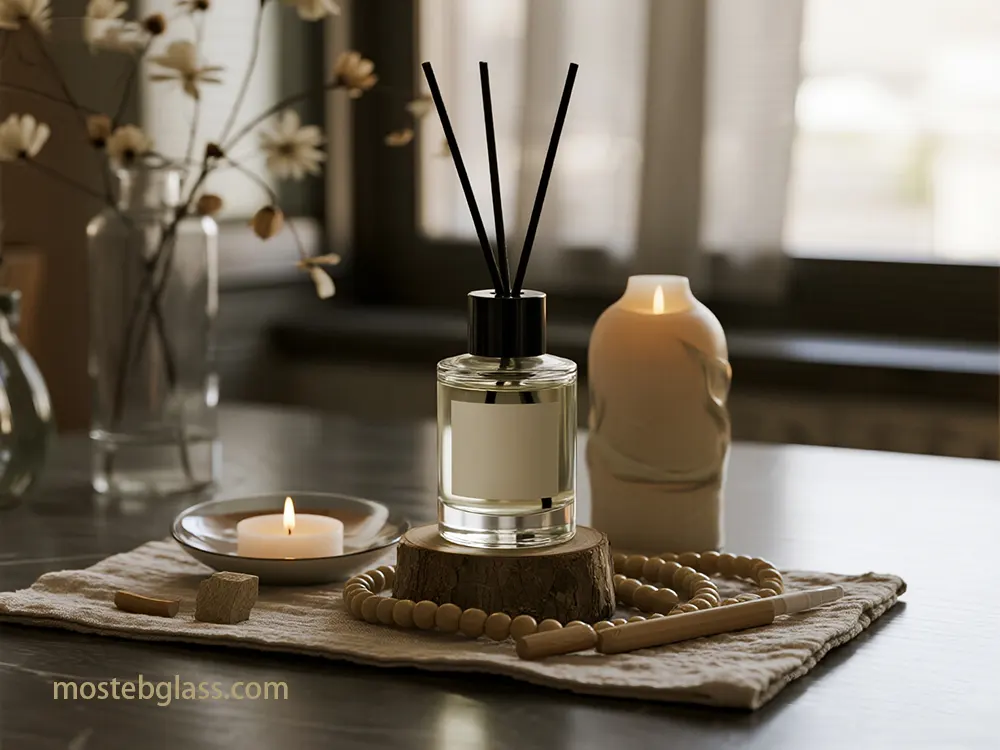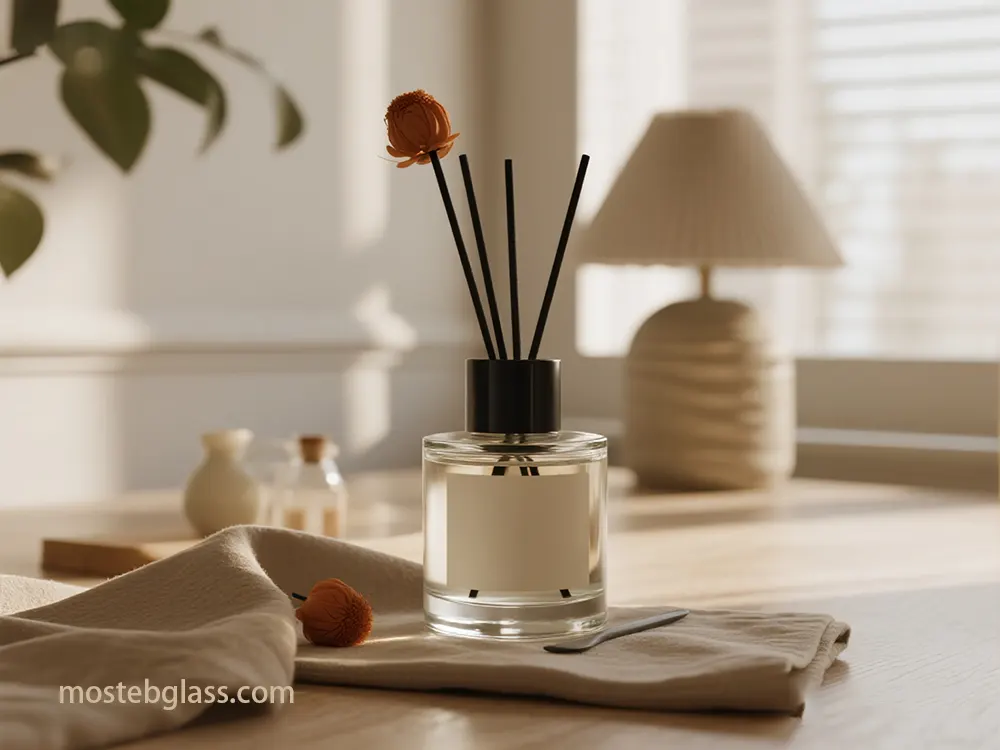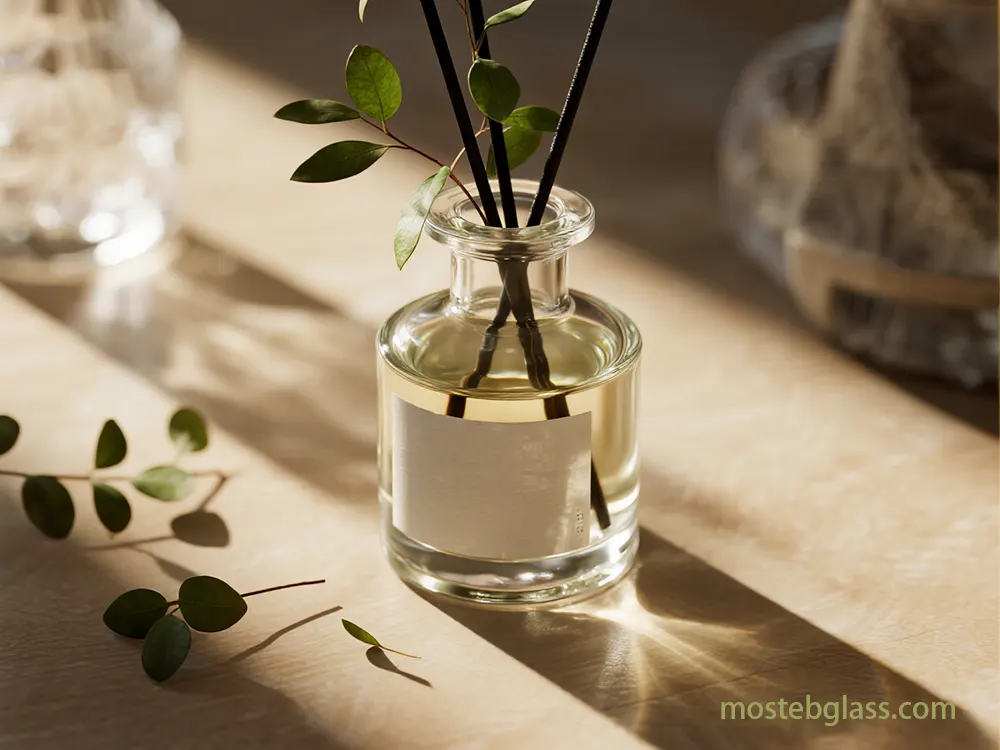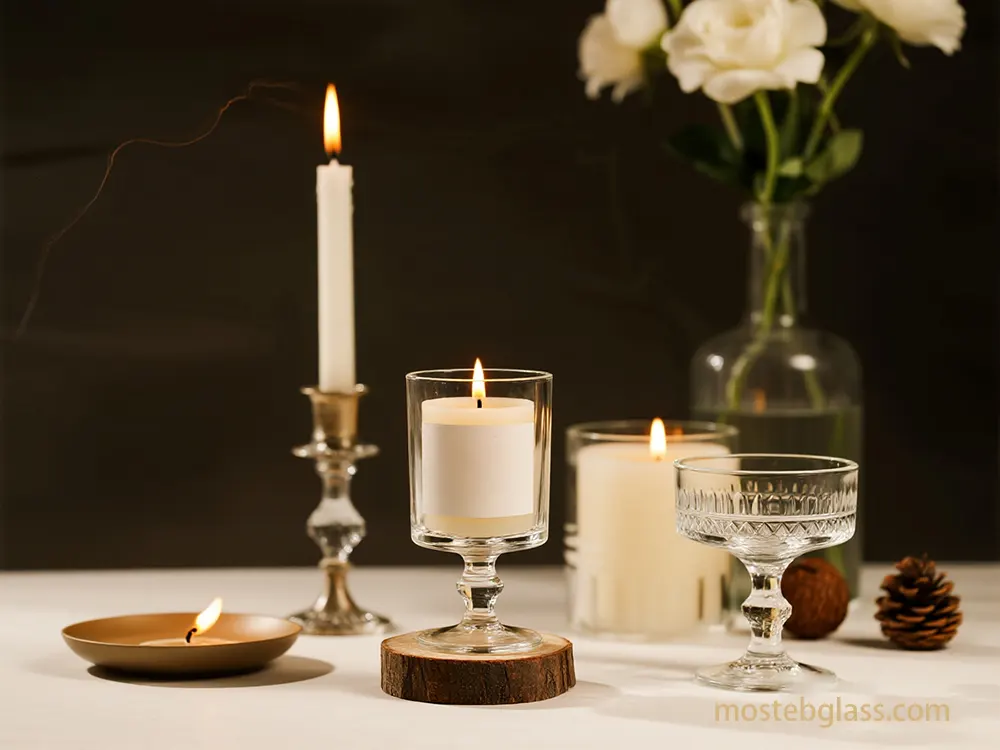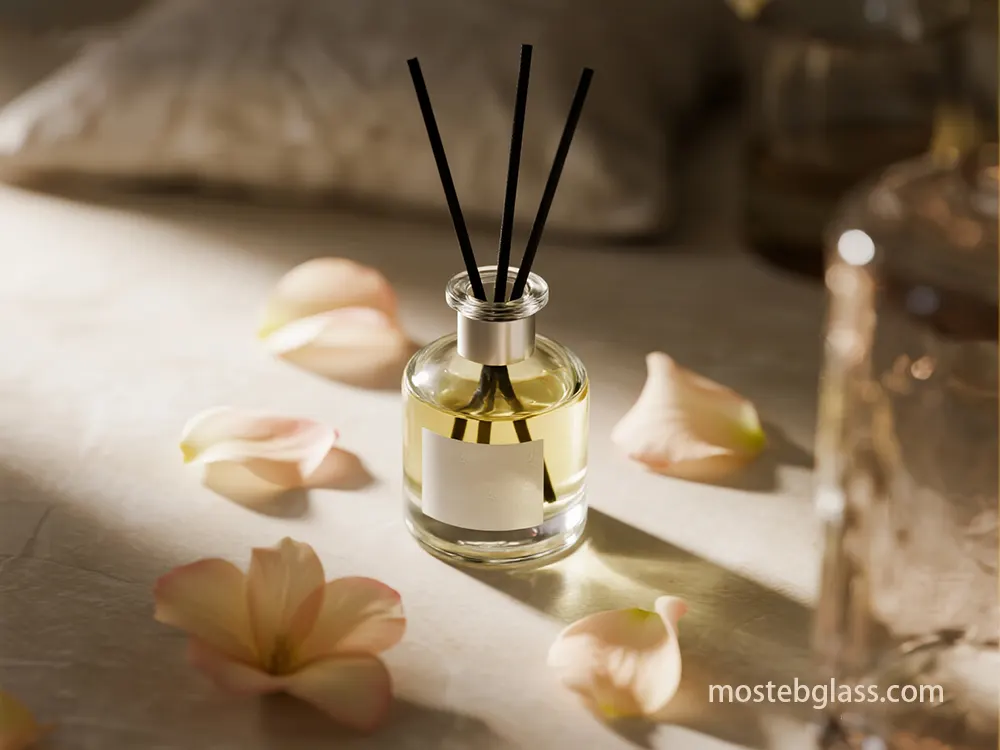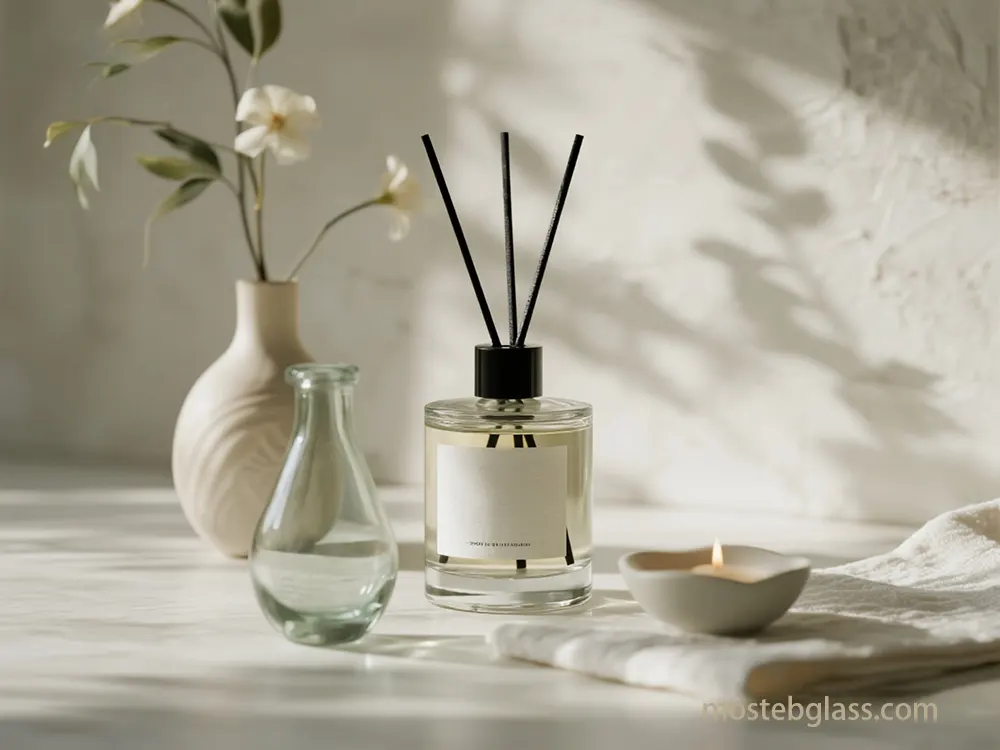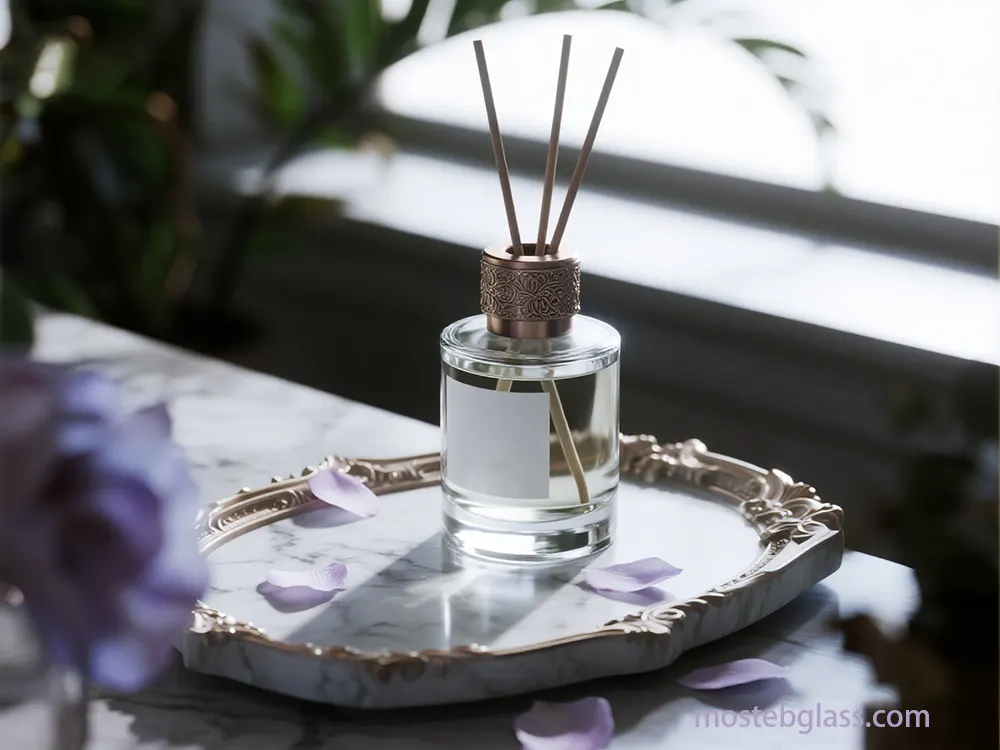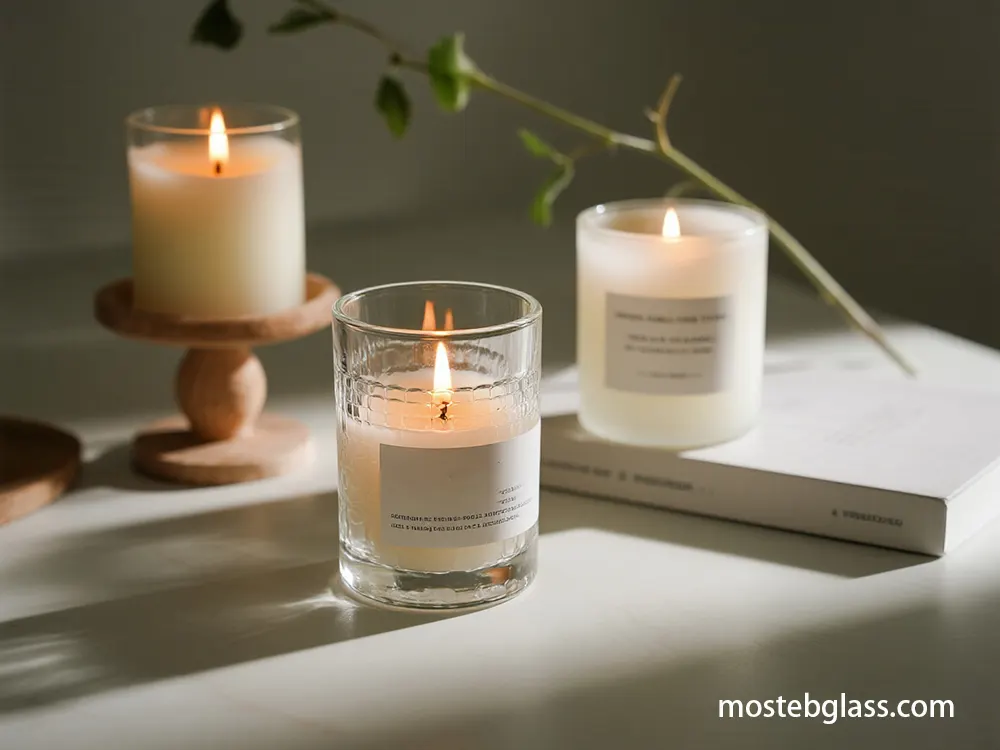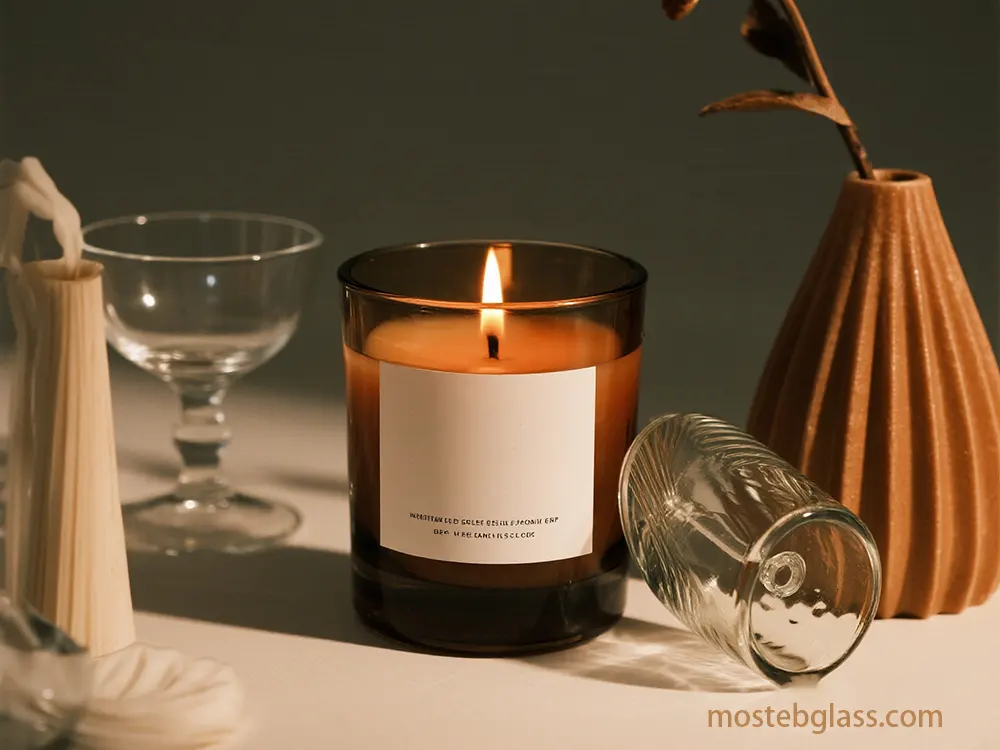Post-Consumer Recycled (PCR) Content:
PCR glass, reclaimed and endlessly reused, significantly conserves raw materials and reduces energy consumption (e.g., 2.5% energy reduction per 10% cullet increase).Growing regulatory pushes, like U.S. state mandates for PCR content in plastics, highlight its importance.While PCR can affect aesthetics, manufacturing advancements improve consistency.PCR supports a circular economy, reducing virgin material reliance and carbon emission.
Reusability and Refillability:
Consumer preference for sustainable packaging is strong, with 78% of U.S. shoppers prioritizing sustainable lifestyles and 79% likely to buy refillable products.Barriers include perceived inconvenience (37%), cleaning effort (42%), and lack of storage (47%).Despite this, successful models like Loop and specialized refill systems (ReCandle Co., Wyxcraft, Arbor Made) demonstrate viability.
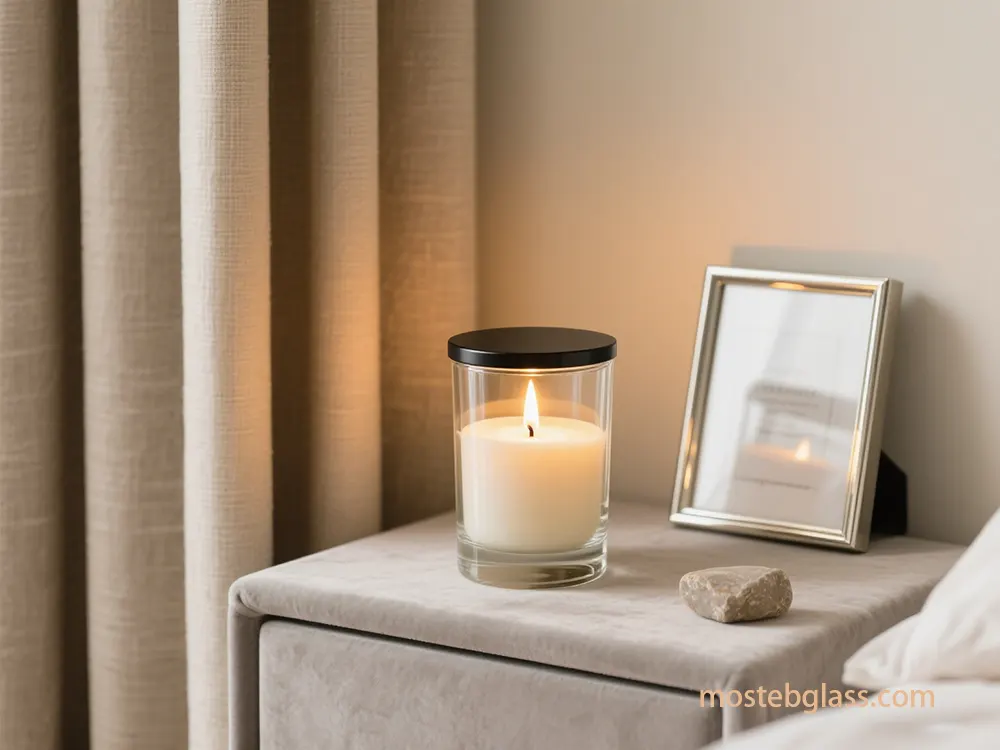
Carbon Footprint Reduction:
Minimizing carbon footprint requires assessing the jar’s entire life cycle, from raw material to end-of-life. Life Cycle Assessment (LCA) systematically evaluates environmental impacts (carbon, water, energy, waste) to identify “hotspots” for improvement. LCA methodology is standardized by ISO 14040/14044.
- End-of-Life Options: Jars should support robust end-of-life scenarios: high recyclability, industrial, or home compostability. Glass is endlessly recyclable. Bioplastics have nuanced pathways: industrial composting (55°C-70°C) is efficient, while home composting is slower and less effective.Certifications like ASTM D6400 and EN 13432 ensure industrial biodegradation within 12 weeks.However, compostable bioplastics in landfills can generate methane and interfere with traditional plastic recycling.
- 1.2. Preferred Materials Mosteb’s preferred materials balance environmental performance and functional integrity:
- Recycled Glass: Perceived as safe and premium, recycled glass reduces waste, is reusable, heat-resistant, and aesthetically versatile.Premium options are often BPA/lead-free and corrosion-resistant.
- Innovative Bioplastics: Promising alternatives for specific design or weight needs.
High-Temperature Cellulose-Based Bioplastics:
Researchers developed wood pulp-derived bioplastics with over 740°C heat resistance and low density.
- Biome Bioplastics’ BiomeHT Range: Offers high-temperature resistant, biodegradable, and compostable bioplastics (e.g., BiomeHT90, BiomeHTX) suitable for injection molding and certified for industrial composting. Spirulina-Based Bioplastics:
- University of Washington developed bioplastics from blue-green cyanobacteria that degrade like banana peels and are fire-resistant. PaperFoam®:
- Made from natural paper, potato starch, and organic binder; 100% compostable and recyclable, ideal for candle refills. PHA (Polyhydroxyalkanoate):
A naturally produced biopolymer, forming the basis for home compostable bioplastics when combined with other materials. - Polycarbonate: Durable, safe, and heat-resistant (over 130°C), it doesn’t shatter like glass.Companies like Intecplast offer polycarbonate jars (ReVel) as a glass alternative.
- 1.3. Essential Design and Functional Requirements Design and functional aspects are critical for safety, performance, and brand appeal:
- Heat Resistance and Safety Standards: Jars must withstand high burning temperatures without cracking.
- ASTM Standards (U.S.): Key standards include ASTM F2058 (labeling), ASTM F2179 (glass heat strength, requiring scratch/temper tests, thermal shock, and manufacturer documentation), and ASTM F2417 (fire safety, including flame height and container integrity).
EN Standards (EU):
Regulated by GPSD, EN 15493 covers fire safety (flame height, no secondary ignition/flaring, container integrity, 10° slope stability).EN 15426 addresses sooting (less than 1.0% soot).EN 15494 specifies safety labeling.
- Thermal Shock Testing: Assesses material’s resistance to sudden temperature changes (ASTM C149, ISO 7459:2004).
- Wick Requirements: EU bans lead wicks; NCA recommends lead-free.
- Lid Compatibility: Jars must work with sustainable lid materials (metal, wood, cork) to maintain integrity.
- Branding Capabilities: Design should allow effective branding via printing, labeling, or unique molds. The industry favors clean, minimalist aesthetics.
- Functional Reusability: Design should encourage repurposing empty jars (storage, plant pots) beyond just refilling, aligning with consumer trends.
- 2. Strategic Sourcing Parameters Strategic sourcing requires understanding primary geographic regions and estimated production volumes for targeted supplier identification.
- 2.1. Primary Geographic Regions for Supplier Search Region selection balances sustainability with logistics and market dynamics:
- North America: Significant glass manufacturing presence, with organizations like GMIC promoting sustainable practices. CPSC collaborates with ASTM on safety standards.Viable for domestic markets, reducing transport emissions. Leaders in glass recycling like Strategic Materials, Inc. (SMI) operate facilities across the region.Alfred University’s Center for Glass Innovation (CGI) researches recycling.
Europe:
Highly developed glass industry with strong sustainability focus. European Commission promotes energy efficiency, waste management, and recycling.EU glass manufacturing emissions are regulated by IED.Glass Alliance Europe advocates for the industry.The flat glass sector aims for carbon neutrality by 2050, having reduced CO2 emissions by 43% since 1990.Regulations like ESPR, EU ETS, and REACH drive sustainable practice.MAGNA Glaskeramik GmbH produces glass-ceramic from 100% recycled bottles.
Global Considerations:
การหลากหลายและราคาการแข่งขันเป็นผลประโยชน์ แต่ต้องสมดุลกับการเพิ่มการปล่อยคาร์บอนจากการขนส่งและการตรวจสอบความยั่งยืนที่ซับซ้อนในสถานการณ์กฎหมายที่หลากหลาย ตลาดของเมืองกำลังพัฒนาอาจมีต้นทุนต่ำ hơnแต่ต้องมีการตรวจสอบครั้งต้นเร็วอย่างเข้มงวดในเรื่องการปฏิบัติที่เกี่ยวกับสิ่งแวดล้อมและแรงงาน
- 2.2. ปริมาณการผลิตคาดการณ์หรือปริมาณสั่งซื้อ การเข้าใจปริมาณสั่งซื้อพื้นฐาน (MOQ) เป็นสำคัญสำหรับต้นทุน ระยะเวลาในการรอรับสินค้า และสต็อก
- การวางข้อกำหนด MOQ และผลกระทบ: MOQ เป็นหน่วยล่าสุดที่ผู้จัดหาสินค้าผลิต และช่วยให้มีประสิทธิภาพและรองรับต้นทุนคงที่ MOQ สูงเกินไปอาจทำให้ธุรกิจขนาดเล็กยากลำบาก
- ช่วง MOQ ปกติสำหรับถ้วยเทียน: สต็อกถ้วยแคนด์ลที่มีอยู่แล้ว: 3,000-5,000 ชิ้น
ถ้วยแคนด์ลที่สั่งตัวเลือก:
20,000-50,000 ชิ้น
- ถ้วยห่อหุ้มแคนด์ลที่เป็นธรรมชาติ: 50-100 ชิ้น
- การห่อหุ้มแคนด์ลที่กว้างขึ้น:5,000-20,000 หน่วย
- ความยืดหยุ่นของผู้จัดหาสินค้าและการเจรจา: บางผู้จัดหาสินค้า (Shenzhen I Green, EcoPackables, LX Packaging) มีการให้ MOQ ต่ำหรือศูนย์สำหรับการห่อหุ้มที่เป็นธรรมชาติ เทคนิคสำหรับ MOQ ต่ำรวมถึงการใช้การจัดส่งสินค้าจากสต็อก การผสมผสานการสั่งซื้อ ความร่วมมือทางยุทธศาสตร์ และการง่ายขึ้นในการปรับแต่ง
- ผลกระทบของราคา: MOQ ต่ำอาจนำไปสู่ราคาต่อหน่วยสูงขึ้น เพราะ MOQ ช่วยให้ผู้จัดหาสินค้ารักษาการเคลื่อนไหวของเงินและปรับปรุงการผลิต
- ผลกระทบต่อความทนทานของหลักสายจัดส่ง: การจัดการ MOQ อย่างมีประสิทธิภาพและวัสดุที่เป็นธรรมชาติที่ทนทานเป็นการสร้างความทนทานของหลักสายจัดส่ง
- 3. ผู้จัดหาสินค้าถ้วยเทียนที่เป็นธรรมชาติที่ถูกชี้ออก การชี้ชายผู้จัดหาสินค้าของ Mosteb มุ่งเน้นการตรงกับ tiêu chíความยั่งยืน ความสามารถของวัสดุ ขนาดการดำเนินงาน และการมีอยู่ทางภูมิภาค
- 3.1. องค์กรรับรองและทดสอบ Mosteb ควรพิจารณาผู้จัดหาสินค้าที่มีการรับรองที่เกี่ยวข้องและมีความต้องการการทดสอบโดยฝ่ายที่สาม
- องค์กรรับรอง: SCS Global Services:
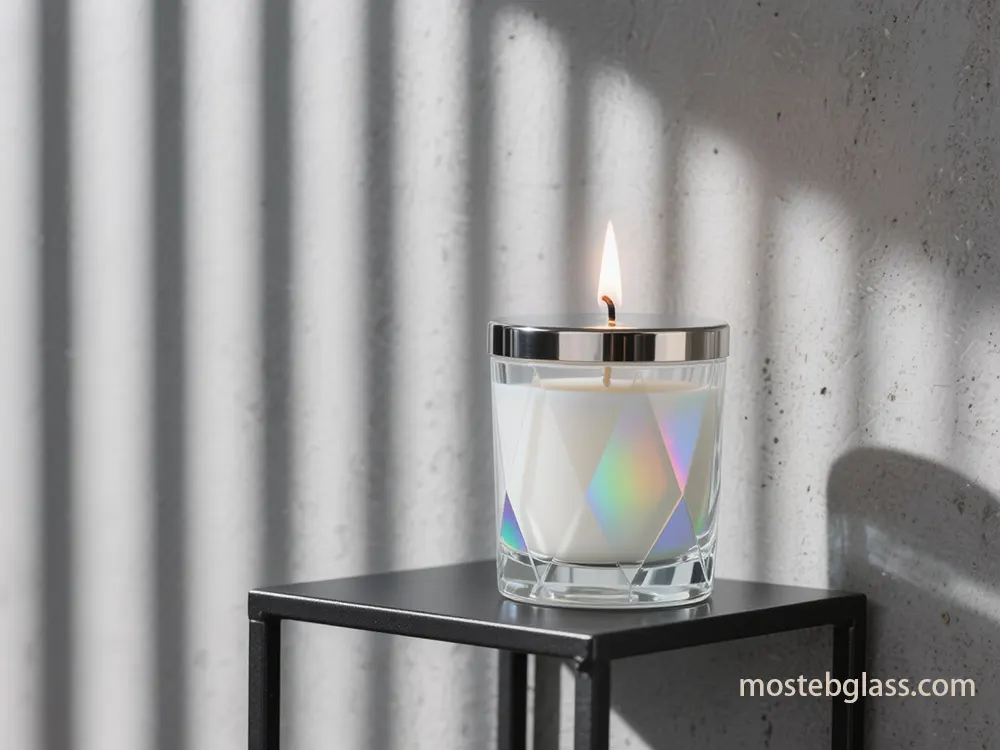
รับรองโดยฝ่ายที่สามสำหรับการกล่าวอ้างเกี่ยวกับสิ่งแวดล้อม ความยั่งยืน และคุณภาพ ซึ่งรวมถึงวัสดุที่ใช้ซ้ำและผลิตภัณฑ์ที่มาจากพืช
Cradle to Cradle Certified:
ที่นิยมทั่วโลกสำหรับสินค้าที่ผลิตอย่างปลอดภัย วนเรียบและมีความรับผิดชอบในห้าประเภท
Biodegradable Products Institute (BPI):
รับรองการประกอบสินค้าตาม ASTM D6400 และ D6868 สำหรับพลาสติกที่สามารถถูกเผาผลาญ
- ห้องทดสอบ: Intertek, QIMA, DEKRA, TUV Rheinland, GS Laboratories:
- มอบบริการการทดสอบเช้างานอย่างครอบคลุม (ความปลอดภัยของฟอน, ความมั่นคงของการเผา, ความเสถียรของโครงสร้าง, การป้ายที่แสดงข้อมูล) DEKRA ได้รับการรับรองจาก DIN EN ISO/IEC 17025. รายการนี้มีเป็นจุดเริ่มต้นสำหรับ Mosteb เพื่อสนับสนุนการสื่อสารกับผู้ให้บริการที่มีความเป็นสามารถ โดยคำนึงถึงวัสดุที่มีความยั่งยืนและทักษะการดำเนินงาน.
- 4. ระบบการประเมินและการเลือกผู้จัดหาซื้อ เมธอดที่มั่นคงเป็นสิ่งสำคัญสำหรับ Mosteb เพื่อประเมินและเลือกผู้จัดหาซื้อซอนเทลที่มีความยั่งยืน โดยรวมการประเมิน, KPIs และอุปกรณ์วิเคราะห์.
4.1. เมธอดการประเมินที่มีโครงสร้าง
- กระบวนการประเมินควรมีหลายชั้น: การกรองและการรับรองเริ่มต้น:
การแจ้งข้อกำหนดเกี่ยวกับการยั่งยืน:
ขอเอกสารเกี่ยวกับส่วนผสมของ PCR ในเสื้อผ้า และการรับรอง (SCS Global Services, Cradle to Cradle, BPI).
ความเข้ากันของวัสดุ:
ยืนยันความสามารถในการใช้วัสดุที่ต้องการ (กระจกที่ถูกบำบัด และพลาสติกที่มีความร้อนสูง).
ความสามารถในการผลิต/MOQ:
ประเมินความตรงกับปริมาณการสั่งซื้อที่ Mosteb คาดการณ์.
- การมีส่วนร่วมทางภูมิภาค: ต้องเพิ่มความสำคัญในอเมริกาเหนือและยุโรปเพื่อลดการส่งออกคาร์บอน โดยคำนึงถึงตัวเลือกระหว่างประเทศสำหรับความต้องการพิเศษ.
- การประเมินและการทำความแน่ใจเชิงลึก: การจัดการสิ่งแวดล้อม:
- ประเมิน EMS (ตัวอย่างเช่น ISO 14001), การใช้พลังงาน/น้ำ, ของเสีย, การส่งออกคาร์บอน, การดูแลสารเคมี. แรงงานที่ยุติธรรม:
- ประเมินสถานการณ์การทำงาน, รายได้ และการขาดหายคนรายใหญ่/การทำงานที่บังคับ (ตัวอย่างเช่น SA8000) [ไม่เกี่ยวข้อง]. ความชัดเจนของหลักสายส่งสินค้า:
ตรวจสอบต้นกำเนิดวัสดุและส่วนผสมของ PCR. สำรวจการใช้ blockchain สำหรับการติดตาม [ไม่เกี่ยวข้อง].
- ความปลอดภัยของผลิตภัณฑ์/ความเป็นไปตามกฎหมาย: ให้ความตกลงตาม ASTM (F2179, F2417), EN (15493, 15426, 15494), และกฎหมายเกี่ยวกับสารเคมี (REACH, RoHS).
- การตรวจสอบที่สถานที่: ดำเนินการประเมินเพื่อตรวจสอบข้อมูลและประเมินความสำคัญ [ไม่เกี่ยวข้อง].
- การรวมการประเมินช่วงชีวิต (LCA): LCA สำหรับการเปรียบเทียบวัสดุ:
- ใช้ LCA เพื่อเปรียบเทียบผลกระทบของสิ่งแวดล้อมของการออกแบบ วัสดุ และระบบ (ตัวอย่างเช่น สินค้าที่ใช้ครั้งเดียว vs. สินค้าที่ซ่อม) มันเป็นการประเมินผลกระทบจากวัสดุแรกเนื่องจนถึงการกำจัด ซอฟต์แวร์ LCA:
- ใช้เครื่องมือเช่น SimaPro, GaBi, PIQET, EcoImpact-COMPASS, Sphera’s LCA for Packaging, หรือ Anthesis Group’s PortfolioPro เครื่องมือที่ง่าย (KIDV, Botta)สำหรับการเปรียบเทียบเริ่มต้น ข้อกำหนดของข้อมูล:
ผู้จัดหาต้องเสนอข้อมูลเกี่ยวกับวัสดุที่ไม่ถูกต้ม พลังงาน การปล่อยคาร์บอน ของเสีย และการขนส่งเพื่อ LCA ที่ถูกต้อง
- การเป็นสมาชิก ISO: ดำเนินการ LCA ที่เป็นการเป็นสมาชิก ISO 14044 เพื่อการตรวจสอบที่แข็งแกร่ง
- 4.2. มาตรวัดสำคัญสำหรับการเลือกผู้จัดหา มาตรวัดควรเป็นการวัดที่สามารถและเชื่อมโยงกับการอยู่รอดและผลตอบรับการดำเนินงาน:
- ผลกระทบของสิ่งแวดล้อม: สัดส่วนของวัสดุที่ถูกซ่อม (ตัวอย่างเช่น มีเป้าหมาย 50%+ PCR)
- การสะสมคาร์บอนที่สอดคล้องกับหน่วย (จาก LCA) ความเป็นไปได้ของพลังงาน/น้ำ (kWh/หน่วย, ลิตร/หน่วย) [ไม่เกี่ยวข้อง]
อัตราการแยกของเสีย [ไม่เกี่ยวข้อง]
การรับรอง (Cradle to Cradle, SCS Global Services, BPI)
- การดำเนินงานและคุณภาพ:
- ความสามารถในการออกภัยความร้อน/การเป็นสมาชิกของความปลอดภัย (ASTM F2179, EN 15493, คำอ้างการผ่านการทดสอบความร้อน)
- การควบคุมคุณภาพ (ค่าของความผิดพลาด, ความเป็นไปได้)
- ระยะเวลาในการส่งสินค้าและการส่งสินค้าตามกำหนดเวลา
- ความเป็นไปได้ของต้นทุน (ต้นทุนต่อหน่วย, MOQ, การเปรียบเทียบรายได้ในระยะยาว)
- สังคมและจริยธรรม:
- การเป็นสมาชิกของการปฏิบัติตามข้อตกลงของแรงงาน (ที่ได้รับการตรวจสอบ) [ไม่เกี่ยวข้อง]
- คะแนนเต็มของความชัดเจน (บันทึกช่องทางจัดหา, การสืบสวน) [ไม่เกี่ยวข้อง]
- การคิดค้นและการเตรียมตัวสำหรับอนาคต:
- การลงทุน R&D ในวัสดุที่อยู่รอดและการซ่อม
- ความสามารถในการปรับตัวต่อการขัดแย้งที่กำลังพัฒนา
- 4.3. แนวทางและความต้องการที่คาดการณ์ไว้
- การพัฒนาผู้จัดหา:
- ปฏิบัติการแอปลิเคชันสำหรับผู้ขนส่งที่มีความสำคัญเพื่อปรับปรุงการปฏิบัติที่อยู่รอด (ตัวอย่างเช่น การปรับปรุงไฟฟ้า, การจัดการของเสีย) [ไม่เกี่ยวข้อง]
- ความร่วมมือร่วมทุนระยะยาว
- Foster relationships for higher pricing, MOQ flexibility, and collaborative innovation.
- Diversified Sourcing:
Mitigate risks via diversifying suppliers in the course of regions and substances.
- Circular Economy Integration: Explore take-again applications, neighborhood recycling collaborations, or funding in advanced recycling for Mosteb’s waste streams.
- Consumer Education: Educate consumers on reusability and proper disposal via clear labeling (EN 15494) and instructions to increase participation and address confusion.
- Digital Monitoring: Implement digital tracking for inventory and supply chain visibility.Define KPIs for ongoing supplier sustainability performance (recycled content, energy/unit, waste reduction) [n/a].
- This robust framework permits Mosteb to optimistically choose out partners assembly stringent sustainability and first-rate requirements, contributing to a resilient and responsible deliver chain. 5.Future Trends and Innovations in Sustainable Packaging
- The sustainable packaging panorama is dynamic. Mosteb must stay abreast of trends for long-term strategic planning and competitive advantage. 5.1. Emerging Materials
- Novel materials offer enhanced sustainability and performance: Advanced Bioplastics:
High-Temperature Cellulose-Based:

Research shows wood pulp-derived bioplastics with over 740°C heat resistance and low density, potentially revolutionizing candle jar design.
Spirulina-Based:
University of Washington developed bioplastics from cyanobacteria that degrade like banana peels and are hearth-resistant.
Gaining traction for domestic compostable bioplastics, obviously produced by way of microorganisms, offering versatility for custom answers.
- Bio-based Composites:
- Integration of substances like hemp, timber, cork, and straw into composites shows promise for stepped forward thermal insulation, adaptable for candle jars. Mycelium-Based Packaging:
- (Speculative) Mushroom root structures are emerging for protective packaging. Their biodegradability and customizable forms could be future candidates for outer packaging or structural components, especially for refill systems. Salt-Based Packaging:
- Heat Resistance and Safety Standards: 5.2. Advanced Manufacturing Processes
- Innovations are making sustainable materials more viable and efficient: AI and Robotics in Sorting:
- Improves efficiency and reduces contamination in sorting recycled glass and ceramics, increasing quality PCR cullet. Chemical Recycling for Glass:
- Explored to break down glass into raw components for specific reuse. Flash-Sinter Crystallization:
Allows ultra-rapid crystallization of glass, saving energy and time in glass-ceramic production.
Selective Powder Deposition (SPD):
- iro3d SPD produces glass-ceramic parts from recycled glass powders, permitting customized designs. Closed-Loop Systems:
- Developing non-stop biking of ceramic and glass waste again into manufacturing, minimizing waste and maximizing aid usage. 5.3. Market Shifts and Consumer Behavior
- Understanding evolving marketplace dynamics and client possibilities is key: Growing Demand:
- Clear and growing demand for sustainable merchandise, pushed thru patron awareness and guidelines.Seventy eight% of U.S. Buyers prioritize sustainable life. Shift to Reusable/Recyclable:
- UK government’s cognizance shifted from biodegradable/compostable plastics to reusable/recyclable due to infrastructure issues.Consumers often misunderstand bioplastic decomposition. Incentives for Reusable Packaging:
Loyalty points and value savings drive adoption.Refilling can be extra low-priced.
Digital Transformation:
- Digital monitoring in packaging streamlines inventory and enhances supply chain resilience. Local Sourcing:
- Bio-based substances provide neighborhood sourcing opportunities, decreasing delivery emissions. Policy and Regulation:
- EU Packaging and Packaging Waste Regulation (PPWR) emphasizes sustainable packaging, with biobased plastics crucial for circular economy dreams.Mandatory LCA in procurement will lessen CO2. U.S. Lacks federal bioplastic standards, leading to misleading labeling. 5.4. Proactive Strategies for Mosteb
- To leverage these trends, Mosteb should consider: R&D Partnerships:
- Collaborate with universities (e.G., Alfred University) and startups to explore new sustainable substances and strategies. Robust Refill Programs:
- Expand person-friendly refill structures, supplying DIY kits or in-shop offerings. Transparent Communication:
Clearly speak sustainability attributes (PCR content material, reusability, give up-of-existence) to construct accept as true with and counter greenwashing.
เพื่อใช้ประโยชน์จากแนวโน้มเหล่านี้ บริษัท Mosteb ควรพิจารณา:
- ความร่วมทำงานในการวิจัยและพัฒนา (R&D): ร่วมทำงานกับมหาวิทยาลัย (ตัวอย่างเช่น มหาวิทยาลัย Alfred) และบริษัทเริ่มแรกเพื่อสำรวจสารสนเทศและวิธีการที่มีความยั่งยืน
- โครงการเติมเต็มที่แข็งแรง: ขยายโครงสร้างเติมเต็มที่มีความสะดวกต่อบุคคล จัดหาเครื่องมือ DIY หรือที่จำหน่ายในร้าน
- การสื่อสารที่ชัดเจน: แจ้งให้เห็นถึงลักษณะของการอยู่ระยะยาวของสิ่งที่ทำให้มีความยั่งยืน (เช่น ส่วนผสม PCR การสามารถใช้ซ้ำ การหมดอายุ) เพื่อสร้างความเชื่อมั่นและต่อสู้กับการทำให้เหลืองเหลือง (greenwashing)
- การชุมนุมเพื่อเปลี่ยนนโยบาย: เข้าร่วมกับองค์กรอุตสาหกรรม (GMIC, Glass Alliance Europe) และผู้กำหนดนโยบายเพื่อข้อกำหนดที่ชัดเจนและโครงสร้างพื้นฐานที่ก้าวหน้า
- โครงสร้างการรีไซเคิลที่ก้าวหน้า: สำรวจความร่วมมือกับศูนย์ที่ใช้การรีไซเคิลที่ยอดเยี่ยมสำหรับกระดาษและดินเหนียวเพื่อใช้วิธีการวงจร
ด้วยการกระตุ้นอย่าง chủ độngกับความก้าวหน้าเหล่านี้ Mosteb สามารถตอบสนองความต้องการที่กำลังเปลี่ยนแปลงและตั้งตัวเป็นผู้นำในการผลิตเทียนที่มีความยั่งยืน




